The keyword is the golden yardstick to touch the business goal, especially if you have a blog based online business. Web visitor finds their topic via a search engine using only key phrases. To optimize the post on your blog, the first step is the optimization process of keywords. We’ll explain all about keyword density.
If you want to rank your targeted keywords, optimizing the keyword to understand Google, and even visitors is a very important issue. At the beginning of search engine optimization, SEO optimizer always did keyword stuffing to rank speedy.
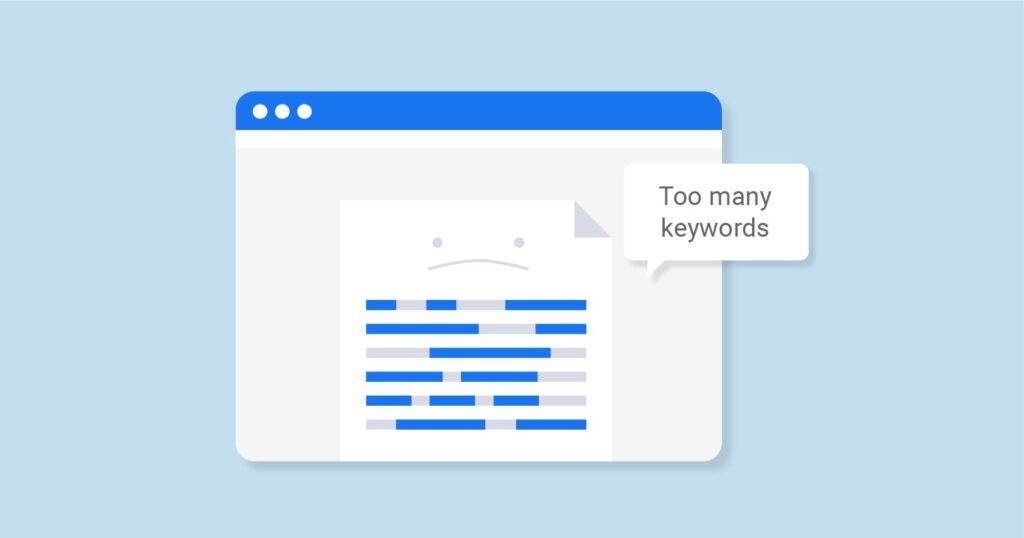
But nowadays, Google and other search engine crawler are so smart to find the stuffing. That’s why knowledge of keyword density is a must!
What is keyword density?
Keyword density is the number of times a keyword found on an optimizing post or within a piece of content as a ratio or percentage of the overall word count. This is also sometimes referred to as keyword frequency, or the frequency with which a specific keyword appears on a webpage.
Keyword density can also be calculated as a specific terms figure. If you determine to find the keyword density of a webpage, the first step will be to divide the number of times a given keyword is mentioned by the total number of words on the page. You will get the figure of the keyword density of that page.
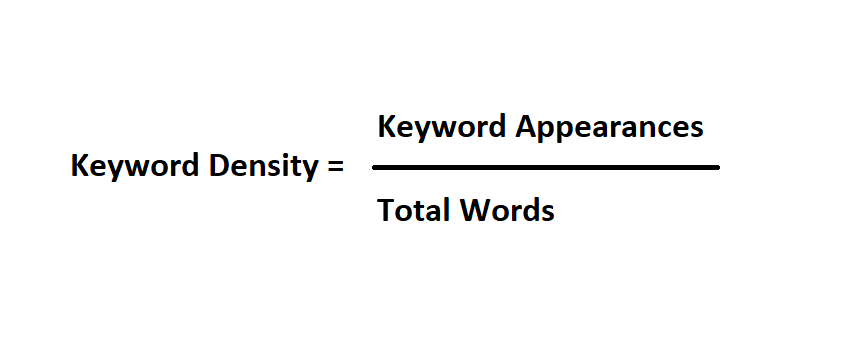
What’s the Right Keyword Density for SEO?
SEO is a hidden gem and so much tricky to use the right keyword density. Actually, there is no clearly defined “formula” about it. Google or other major search engines doesn’t have any proper guidelines.
According to the research of search engine optimization expert and content marketer, you will get a assume data that tell you exactly how many keywords a piece of content should contain, nor are there any specific figures.
It’s very important to remember these criteria of keyword density:
- Articles with low keyword density will not achieve the desired results in search engines.
- High keyword density may get your entire website flagged for keyword spamming.

PRO TIP: 1-2% of keyword density along with “semantic keywords” and LSI keywords can be better optimized for SEO perspective.
How to improve your keyphrase density
If your keyword density score is too low, you can use the LSI keyphrase more often in your text. Check your article and confirm you make clear what you’re writing about. Stay on topic! If the keyphrase density is too high, you’re using your focus keyword too often. This process will be so spammy to Google.

Here are the guidelines that you should follow:
- Write focus keyword or keyphrase is within one sentence or it won’t count.
- Check your spelling to correct the right form of keyword-based on grammatical rules.
- If your content looks too high main keyword density, make better use of synonyms.
- Use the broad topic of your keyword niche.
- Some non-Latin, non-ideograph based languages may not calculate accurately.
Is keyword density a myth?
We find a few exciting things about keyword density. When we check the content doing too much keyword stuffing, sometimes google or other crawlers rank it easily. It’s doesn’t follow the exact rules of keyword density.
For this confusion, every blogger should follow some basic own researched strategy.
Can the right keyword density in my content increase my Google rankings?
First answer will be “Not”.
You have to ensure the web pages the perfect targeted keyword. At least google bot can read your post article as a natural thing. In the future, if search engines update their algorithm, your page or post will be high authoritative to Google.
How to Keep Keyword Density Natural
You should always set up rules in your brain about the content strategy. Everyone works hard to rank their page with the focus keyword. To be natural, use the targeted keyword at least one time in your content out of 200 words. But it won’t be the same phrase. Use synonym of the keyword.
Google is so smart to understand your keyphrase. They can identify the keyword stuffing.

Following these steps you can make your blog post more natural.
⭐ Step 1: Effective Keyword Research
Effective keyword research is the most important part. You must need to identify the targeted focus keywords. After finding the main keyword, include it in the content before you can start stuffing them.
PRO TIP: You can use SEMrush to identify the right keyword to optimize your content. You will find LSI keyprhase from this awesome keyword research tool.

In the keyword overview menu of the SEMrush keyword research tool, there is a lot of high targeted semantic or LSI keyword waiting. Identify them and input them into your content.
⭐ Step 2: Avoid Incorrect Phrases
If you input too much high ranking keyword to rank on Google, you may end up adding incorrect phrases and sentences to the content.
For example, “I am running on road” is not correct. You need to add ‘the’ before road to make the sentence grammatically correct.
PRO TIP: Grammarly grammar checker can make this stuff so easily. This fantastic writing help tool can suggest the error keyphase and grammatical rules on your content.
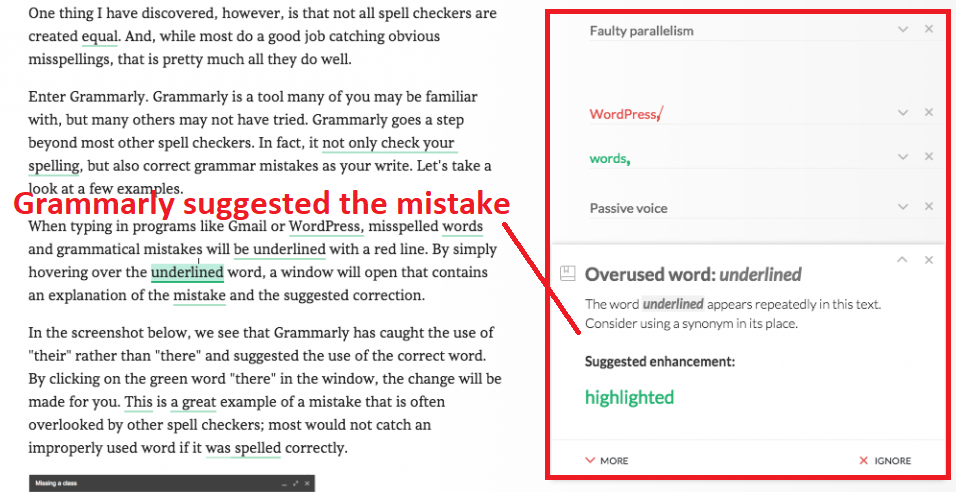
⭐ Step 3: Increase the Word Count
If you want to do keyword stuffing naturally, you have to do an article by increasing the word count of your content. Writing 1000 words instead of 800. With this extra 200 words, you can add more targeted keyphrases.
An organized Article Rewriter can be the perfect tool to increase the content. Rewriter will help you to write and increase the article without maintaining SEO rules.
⭐ Step 4: Content quality is the King
Quality content is a major part of blogging success. It’s not too easy to create a better article readable both for humans and engines!
Search engines, especially Google, always care about the quality of your blog post when determining your rankings. The SEO focused keywords you use definitely boost you better ranking but they are only effective if you are providing quality content.
PRO TIP: To create quality content, you can add a TOPIC tool to your list. This tool will help you with the best quality SEO content.

How many keywords should I use per page?
How many keywords should I input or optimize each page? It’s the common question of the website owners.
It will totally depend on the subject that you want to get rank for. Some pages or individual articles may have a singular focus. This type of page answers only one query. If you optimize multiple keywords focused page, you can target two or three keywords per page, even if they’re just close variations. Four or over five keywords will be too much stuffing.
You can test your page with the following rules:
- Take the number of organic landing pages you’ve chosen
- Multiply that number by the range of keywords per page (1-4) to get your range, or
- Multiply the number of organic landing pages by 2.5, the average of the range.
Why does keyphrase density have to do with SEO?
Optimal keyword density can give a positive signal to Google that your content is perfect all about a specific query. Having this type of sign provide your blog post relevance and better keyword presence.

But over-optimized with key phrase stuffing can drive your webpage into a danger zone. Keyword stuffing is wrong and a spammy method that won’t get you up in the ranks anyway.
Best Practices to Nail Keyword Density

When deciding on keywords to make the most out of your SEO strategy, it’s not a perfect idea to stick to just the main or focus keyword. Unless your business has a truly unique and singular focus.
By relying upon that one well-searched keyword or phrase — however, appropriate it may be — you could be facing some high and too much tough competition for top search result rankings. Because your competitors are also trying to focus on that particular topic.
Here is step by step process to nail keyphrase density in your content.
1. Avoid Single Targeted Keyword
Always avoid single targeted keyword when creating content. Rather create and optimize your blog article around a cluster of related keywords. Make sure to include synonyms, plural, and/or other verb tenses of the keywords you are focusing on. You have to add keywords that are embedded within your keyword phrase.

2. Place your keywords in the perfect place
If you want to target your KEYWORD DENSITY, you must add keywords in particular areas to be more optimized for search engines. This process will help you to rank easily.
Where can I Input keywords?
As bloggers, we have to create a few common strategies that can be helpful both for SEO perspective and website visitor. Maximum SEO experts are agreed on the following areas add keywords:
- H1 Tag
- H2 Tags
- Beginning of Article
- End of your article
- URL
- SEO Title tag
- Meta description
- Image Alt Tag
1. H1 Tag
It is numerous vital areas to input keyword. Try to input exact keyword phrase combining with long-tail words. This placement helps Google and other search engines understand the overview of your post and properly rank it in the search results.
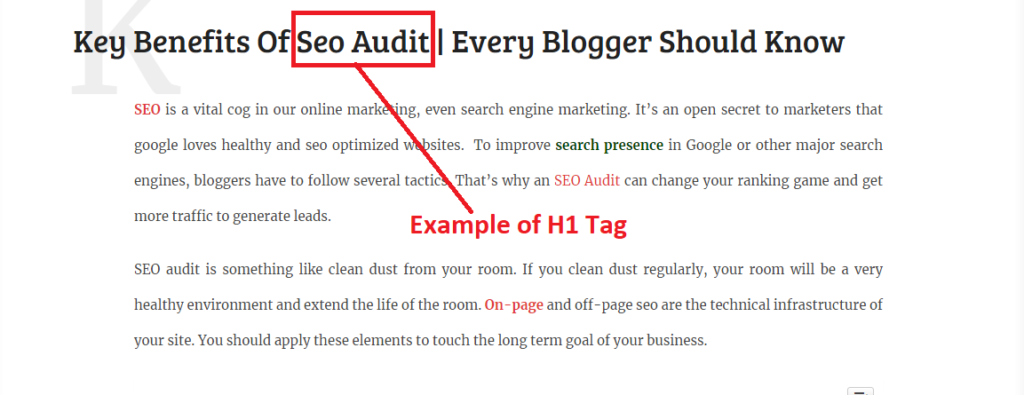
2. H2 Tag
H2 tag is another important place to add keywords. You can place your keyword in plurals or LSI based form in H2 Tag. Google uses headers to help understand your entire post better so you can rank in the search results.
3. Beginning of Article
Many experts believe that Google gives more value to the first 100 to 200 words in your post article. The first 100 to 200 words of content is where an article writer sets up the introduction according to the content relevance. Since most website article readers only continue, if the introduction is pretty good.
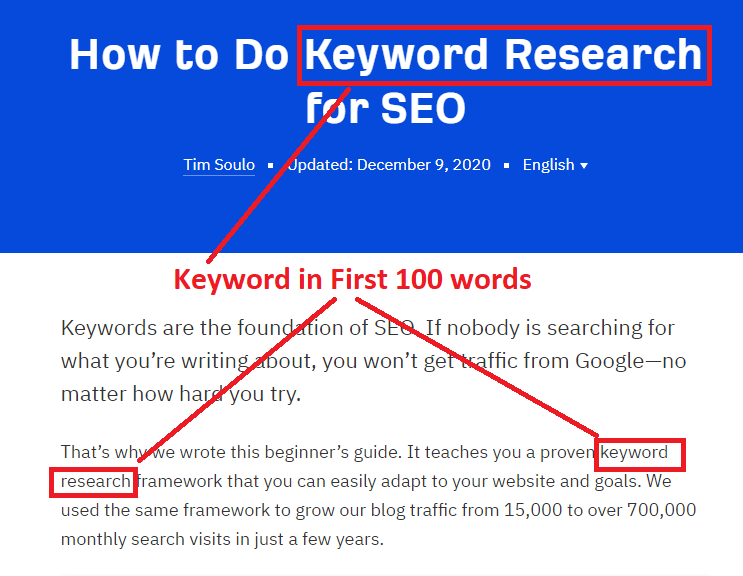
For this reason, keyword adding at the beginning of an article is better to practice to optimize.
4. End of Your Article
Conclusions to blog, news, or any kind of article are important. It wraps up the full story and comfortably tells the blog visitors that they’ve reached the end.
The truth is, the article writer has a hard time writing conclusions. Always keep your conclusion part handy, and reach for it the next time. Keyword at end of the topic won’t be benefited directly on your keywords ranking. But at least it can create a positive impression on Google.
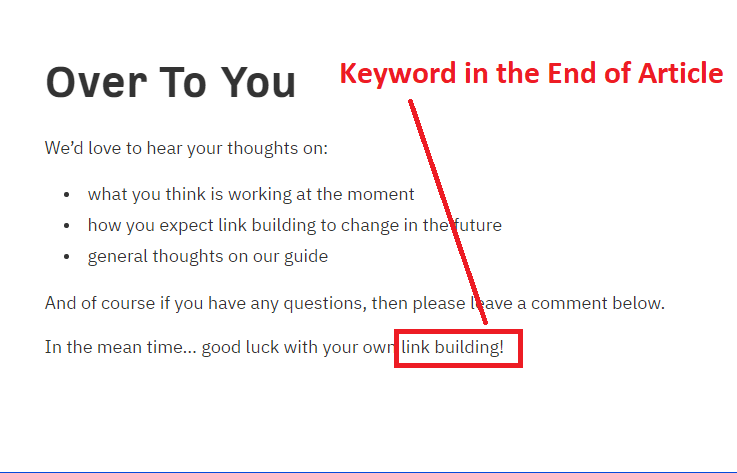
5. URL
Though URLs are a very small ranking factor, keeping the keyword in the URL will add extra value to the search engines. While Google gives weight to the authority of the overall domain, keyword use in a URL can also act as a ranking factor.
If you use a URL that included with the focus keywords, it can speed up your site’s search visibility. But don’t use too big a URL that looks un-natural.
6. SEO Title tag
Google starts cutting off title tags in the SERPs after around 50–60 characters. 50–60 characters is a better rule of thumb. It’s the best practice to keep your title tags around this length.
But how can I write the better SEO title. Here are few consideration:
- Write for humans, not search engines
- Make sure all title tags are unique
- Make sure a title tag exists on all pages
- A title that first impressions count
- A title that provides brand leverage
7. Meta description
A meta description is a specific type of meta tag that appears in the HTML code of a Web page. This meta-tag helps to tells search engines what the topic of the page is.
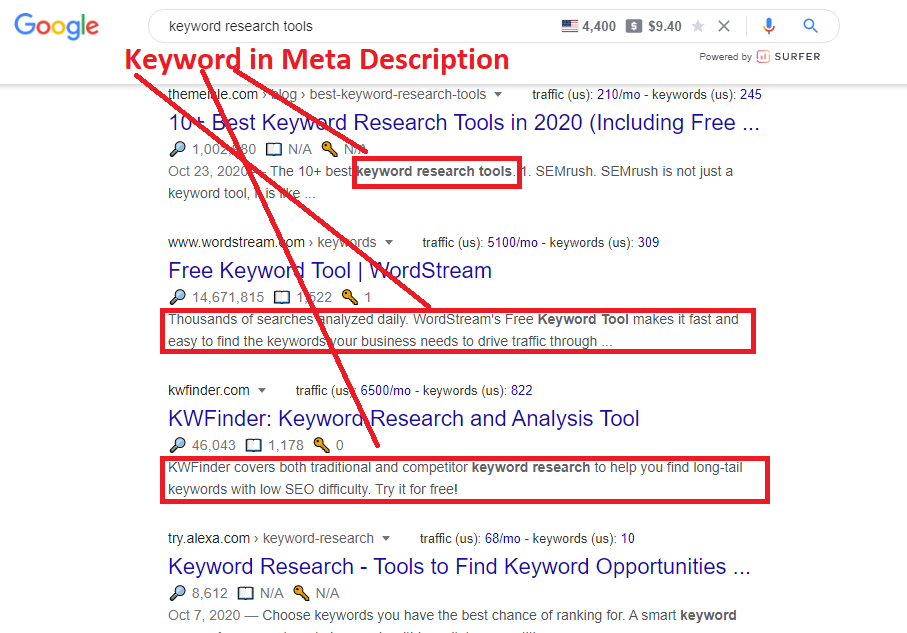
The length of meta descriptions hasn’t any specific rules. But Google generally captures snippets to ~155–160 characters. It’s best to keep meta descriptions long enough. Experts recommend the meta descriptions between 50–160 characters.
8. Image Alt Tag
In recent times, the SERP page of Google delivers just as many image results as they do text-based results. Google pulls in a substantial pack of clickable images to the beginning of the main results page. For this reason, properly optimized image can improve your image in Google image.
What should be the keyword density?
How do you calculate keyword density?
How do I increase keyword density?
Does keyword density still matter?
Final Thoughts
Now you understand keyword density and its best practice. Keyword stuffing can harmful to the rank of your page. Know how many times to use keywords in your content. Get tools that help you identify the keyword staffing and suggest the exact density of keywords.